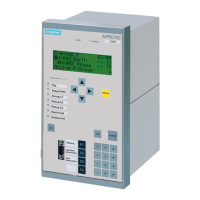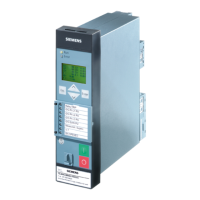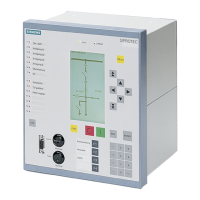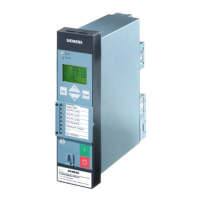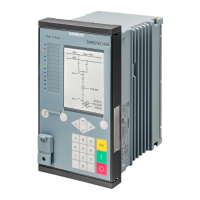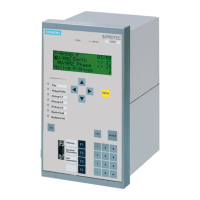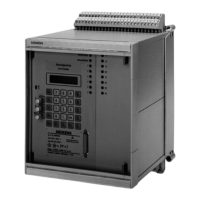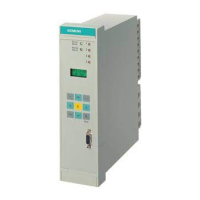•
Filtering and preparation of the measured quantities
•
Continuous monitoring of the measured quantities
•
Monitoring of the pickup conditions for the individual protective functions
•
Interrogation of limit values and sequences in time
•
Control of signals for the logic functions
•
Output of control commands for switching devices
•
Recording of messages, fault data and fault values for analysis
•
Management of the operating system and the associated functions such as data recording, real-time
clock, communication, interfaces, etc.
•
The information is distributed via output amplifiers (OA).
Binary Inputs and Outputs
The computer system obtains external information through the binary input/output boards (inputs and
outputs). The computer system obtains information from the system (e.g remote resetting) or from external
equipment (e.g. blocking commands). These outputs include, in particular, trip commands to circuit breakers
and signals for the remote indication of important events and conditions.
Front Panel
Optical indicators (LEDs) and a front display panel (LC display) provide information on the function of the
device, and indicate events, states and measured values.
Integrated control and numeric keys in conjunction with the LCD enable interaction with the remote device.
These elements can be used to access the device for information such as configuration and setting parame-
ters. Similarly, setting parameters can be accessed and changed if needed.
In addition, control of circuit breakers and other equipment is possible from the front panel of the device.
Serial Interfaces
The Front PC Interface is provided for local communications with a personal computer using the DIGSI soft-
ware. This facilitates a comfortable handling of all device functions.
The Rear Service Interface can also be used to communicate with the relay from a PC running the DIGSI soft-
ware. This interface is especially well suited for a permanent connection of the devices to the PC or for opera-
tion via a modem. The service interface can also be used to connect an RTD box (= resistance temperature
detector) for obtaining external temperatures (e.g. for overload protection).
All data can be transferred to a central control center or monitoring system via the serial System Interface.
This interface may be provided with various protocols and physical transmission schemes to suit the particular
application.
A further interface is provided for the time synchronization of the internal clock via external synchronization
sources.
A range of communication protocols are available from a variety of additional interface modules.
The operator or service interface allows you to operate the device from a remote location or on site using a
standard browser. This is possible during commissioning, checking and also during operation of the devices.
The SIPROTEC 4 Standard “WEBMonitor” is available for this task.
Power Supply
A power supply unit (Vaux or PS) delivers power to the functional units using the different voltage levels.
Voltage dips may occur if the voltage supply system (substation battery) becomes short-circuited. Usually,
they are bridged by a capacitor (see also Technical Data).
Introduction
1.1 Overall Operation
SIPROTEC 4, 7SJ61, Manual 19
C53000-G1140-C210-6, Edition 05.2016
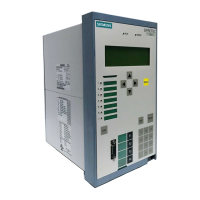
